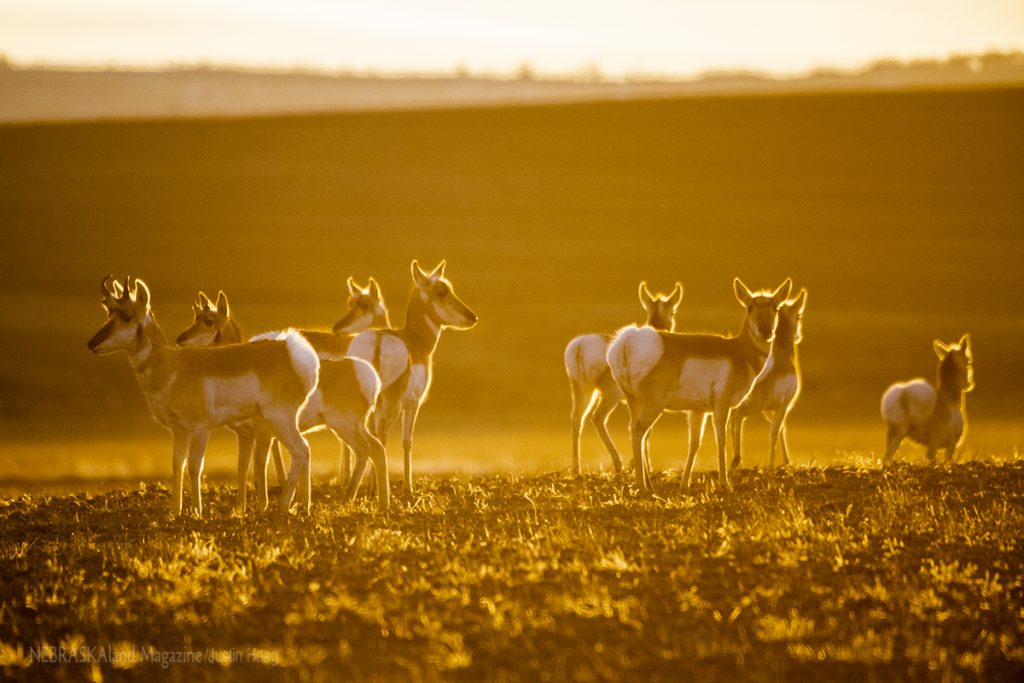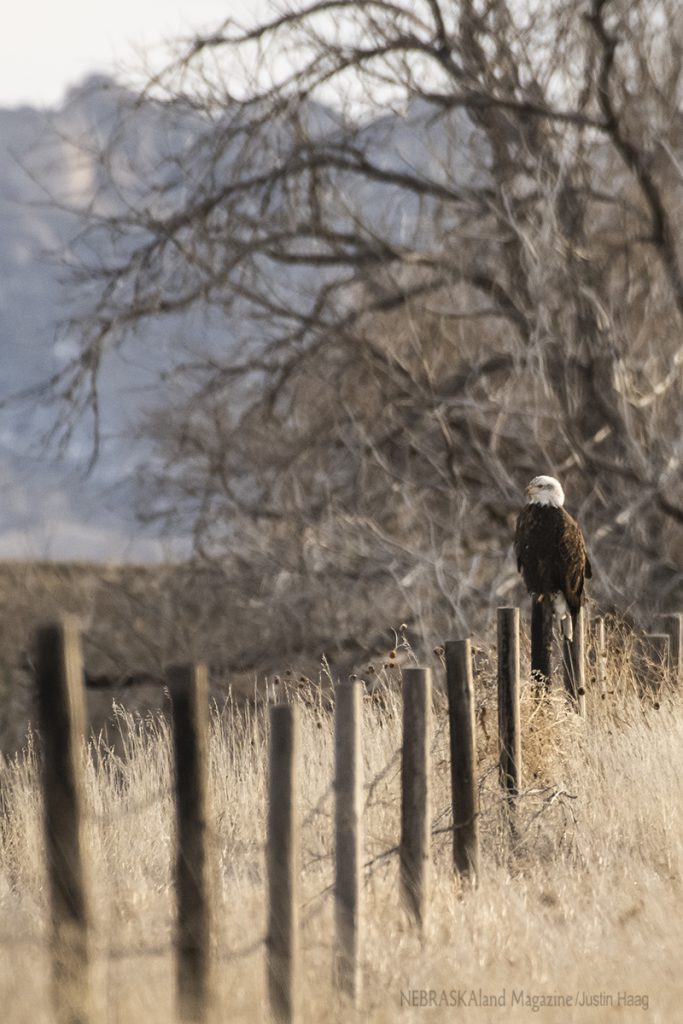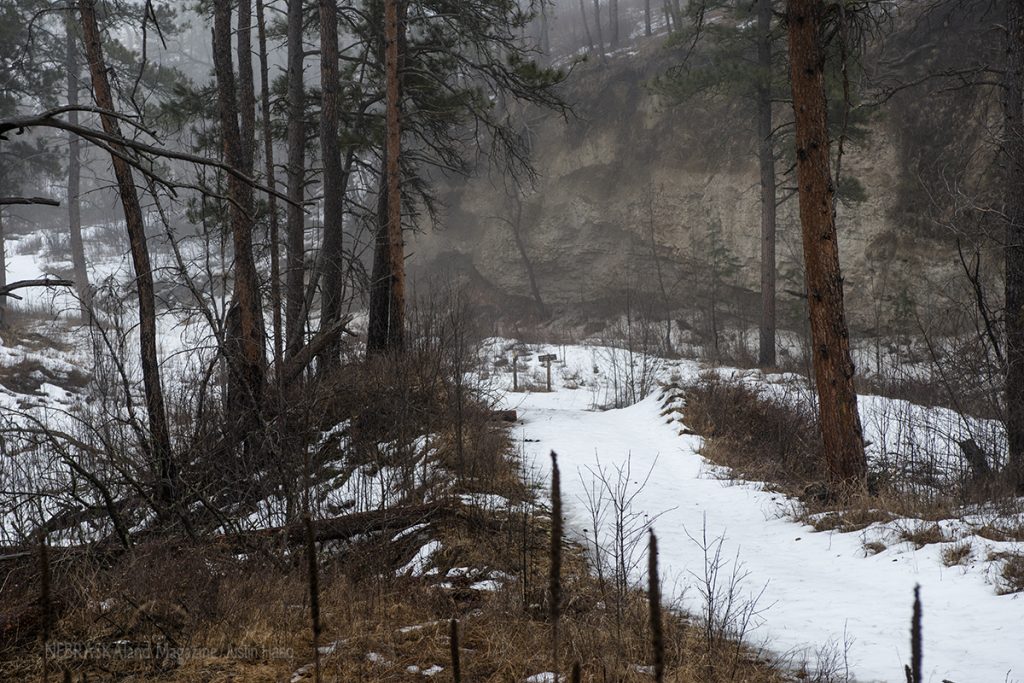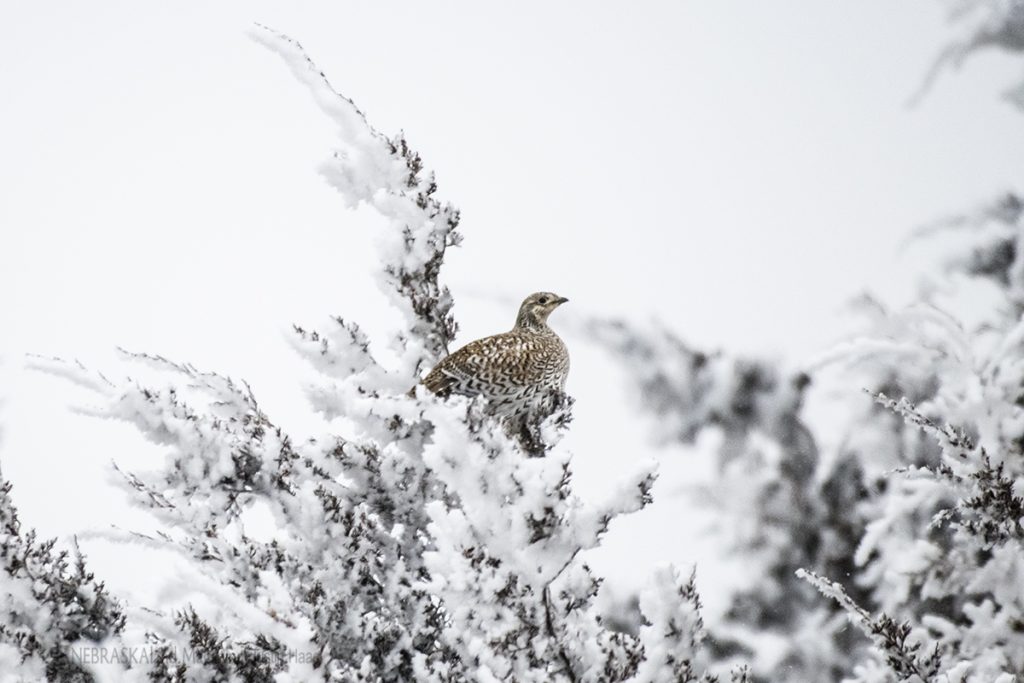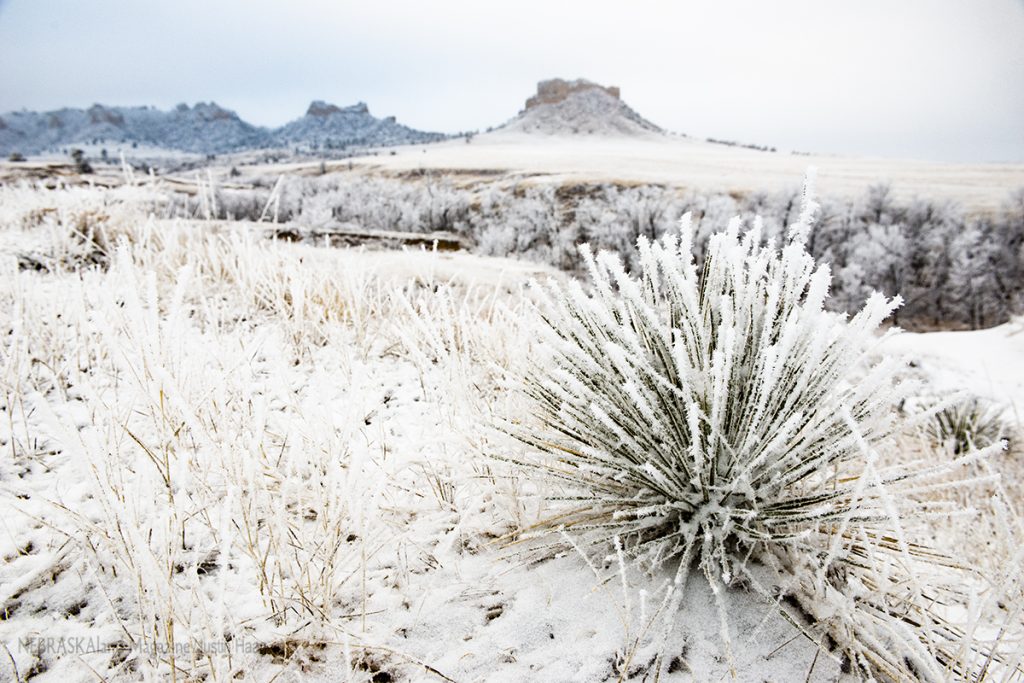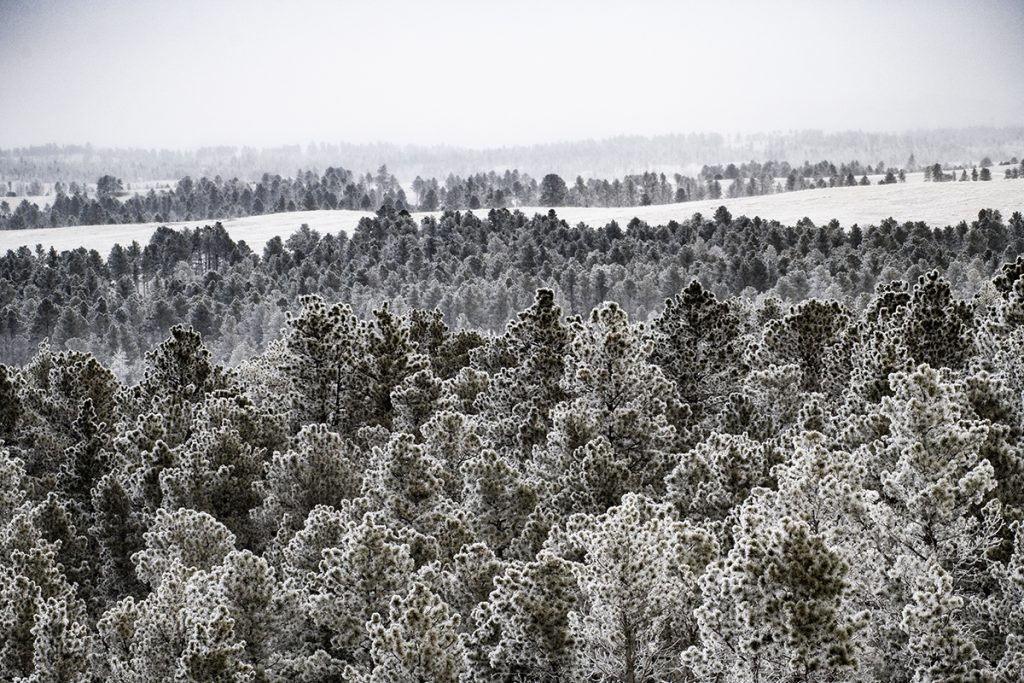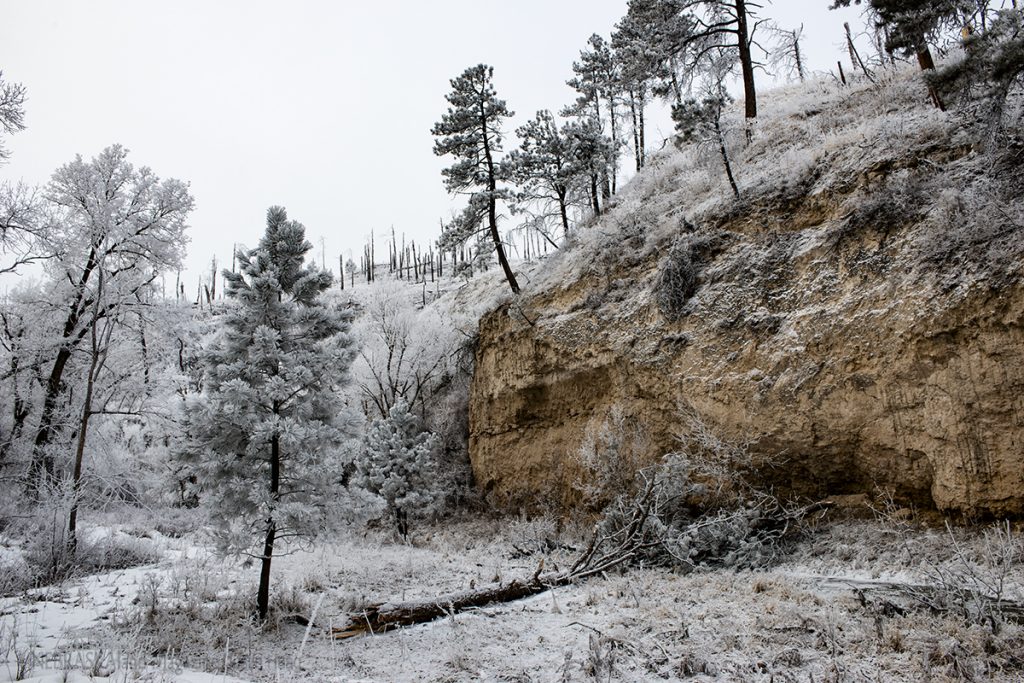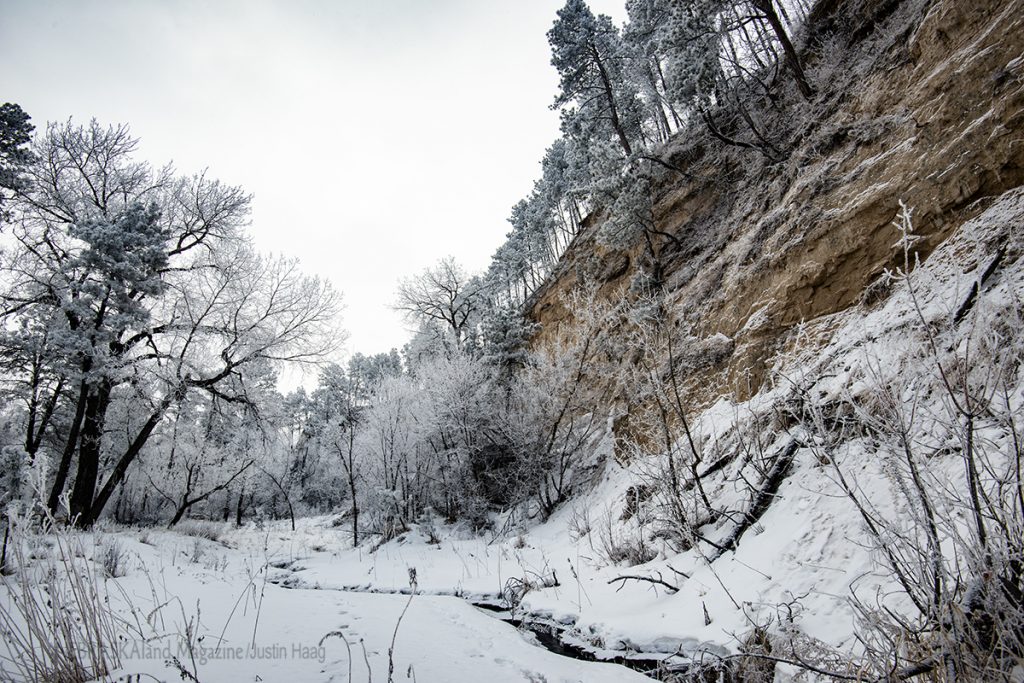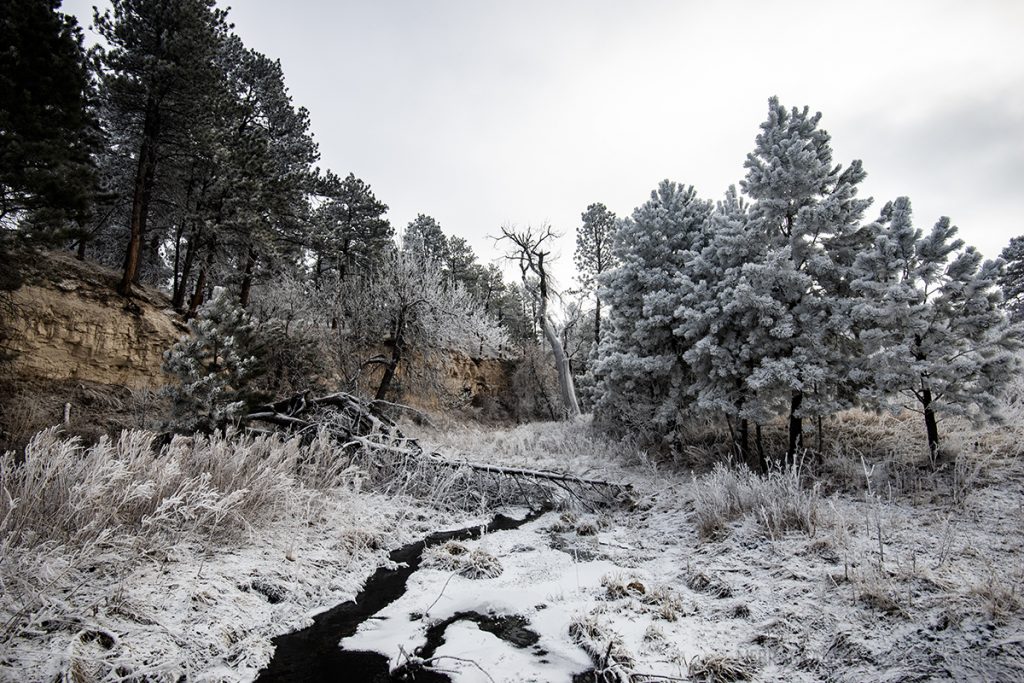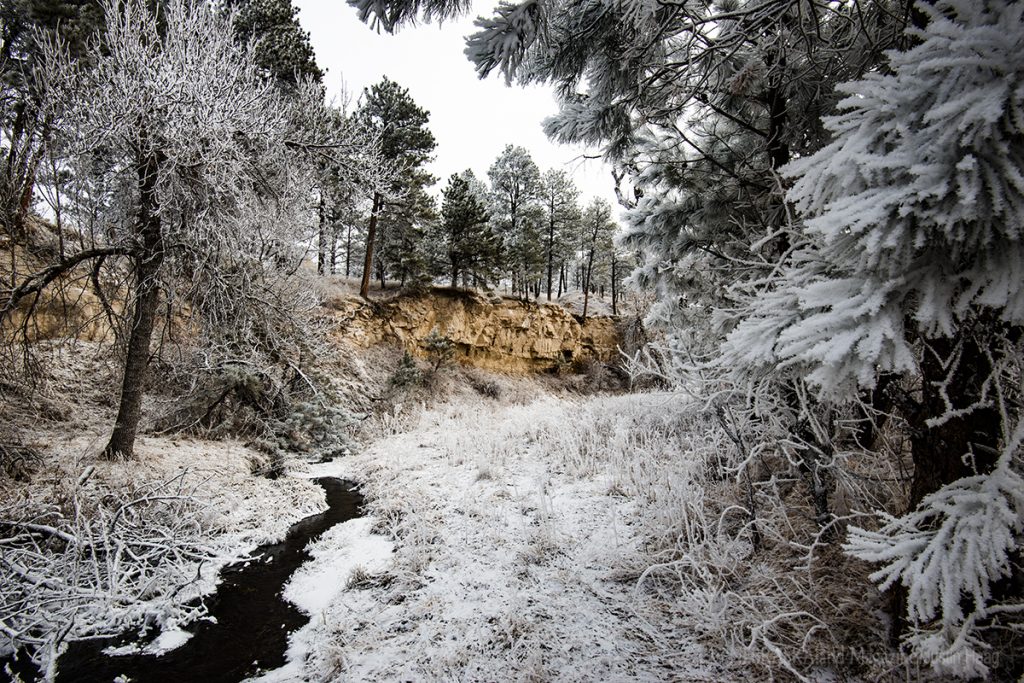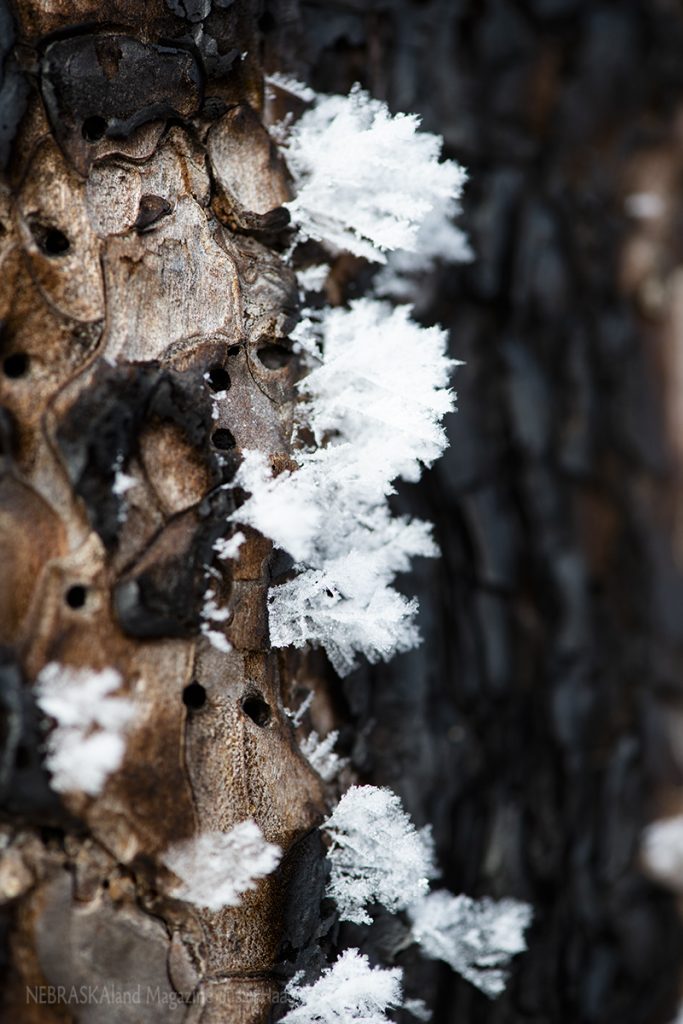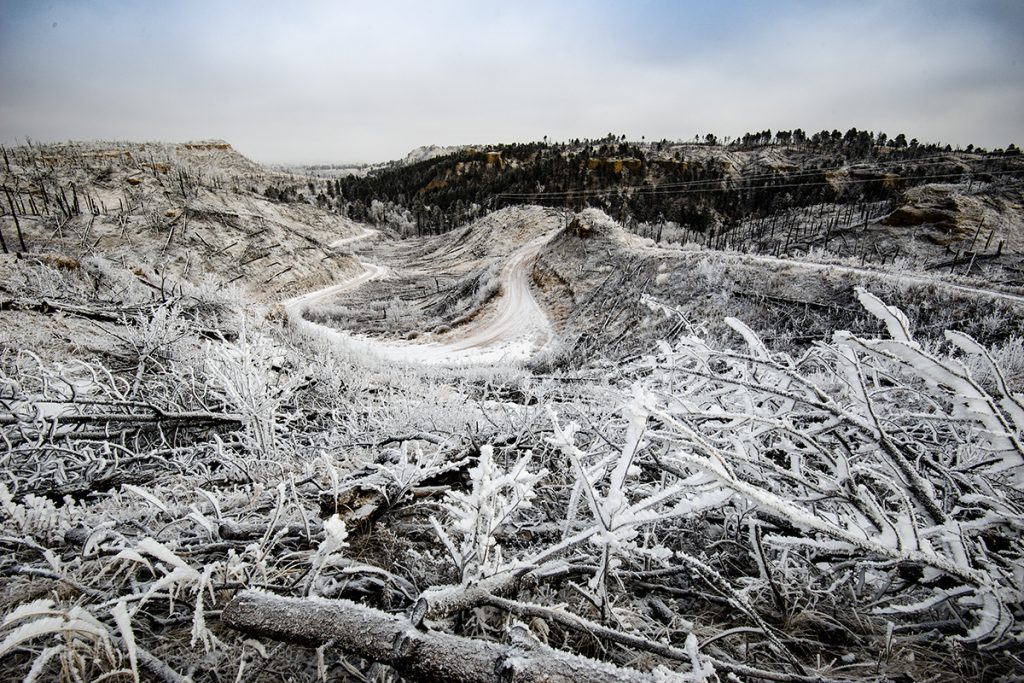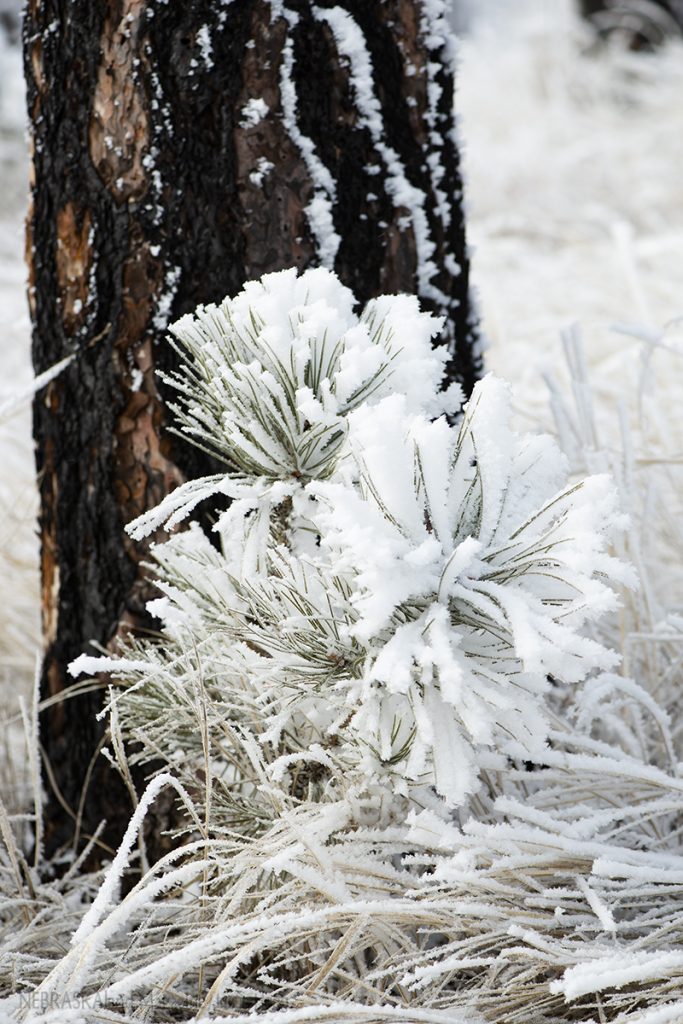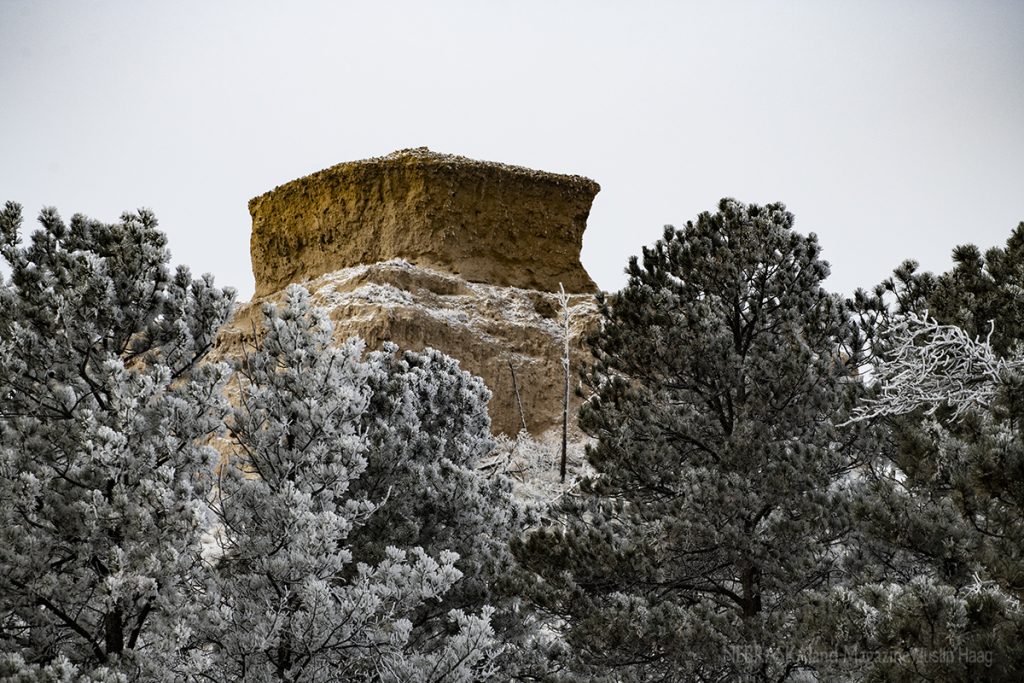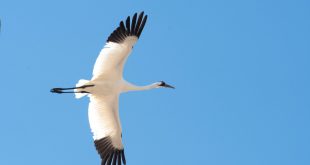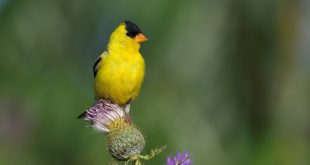There is always a lot of beauty in the Nebraska Panhandle. For nature photography, though, I am a lot less inspired during periods without snow or colorful foliage. Seems we have not had as much snow this year as usual, and the snow we have had has melted quickly. With such conditions, I gravitate toward the wildlife for imagery.
Such as pronghorn at sunrise.
Those of us who have been around long enough to witness the return of the bald eagle will always find them worth photographing. For more on this species, check out my podcast from last week.
Sunday afternoon, I joined a group of mountain bikers in scouting potential new trails for riding at Chadron State Park. As we hiked around the rugged southwest area of the park, the fog moved in and out of the pines and conditions seemed to change by the minute. While it may have been a tad chilly, the visuals were stunning and seemed to enhance enthusiasm for the mountain bikers.
Later Sunday, as my family and I returned home from a Super Bowl party, the air was still thick with cold moisture. I suspected the next morning would bring some “killer frost.” When some hear the term “killer frost,” they might think it is time to cover the tomato plants. When I am talking photography, though, “killer” is usually a good thing.
So, Monday morning I rose well before sunrise and headed west. Sure enough, along with daybreak appeared a hearty hoarfrost accentuated with a little fluffy snow. “Killer” indeed. With no wind and the thermometer on my dashboard fluctuating between 2 and 3 degrees Fahrenheit, the frost stuck around long enough for an extended photo shoot.
Cedar trees, laden with snow and frost, apparently provided an overnight perch for this sharp-tailed grouse and other members of its flock.
Crown Butte was looking appropriately royal.
Crow Butte and Little Crow Butte – along with yucca plants — were stately, as well.
The Pine Ridge seemed aglow with frost.
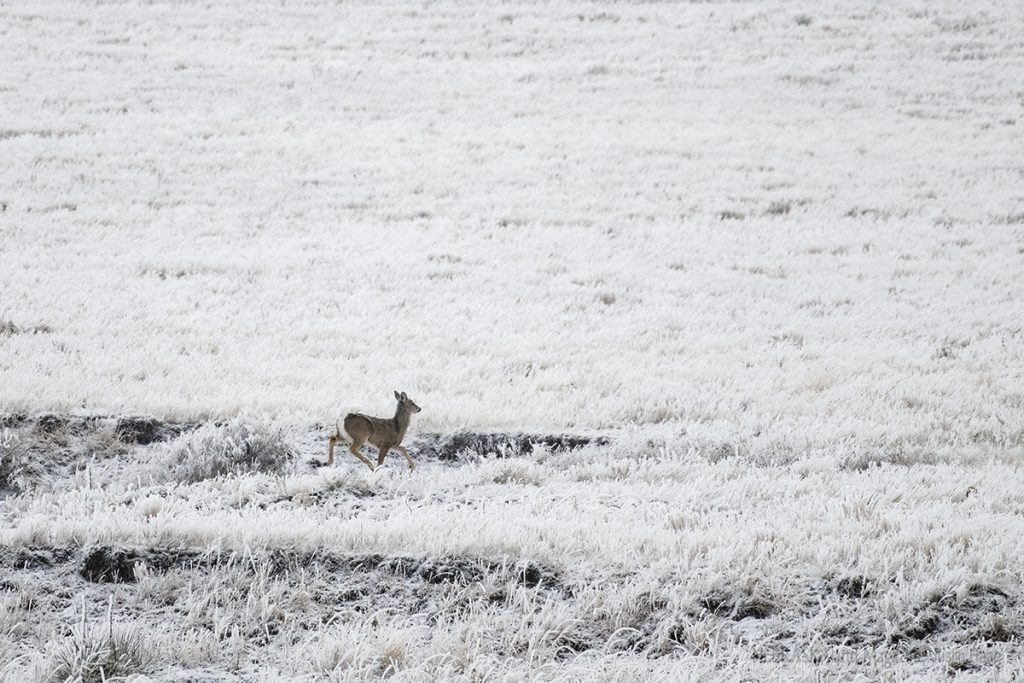 White-tailed deer are easy to spot on a white-coated grassland.
White-tailed deer are easy to spot on a white-coated grassland.
The sandstone cliffs along West Ash Creek stand in contrast to the white scene surrounding them.
East Ash Creek was not to be outdone.
Would you agree that even the burned ponderosa pines are pleasing to the eye in this scene?
Bits of hoarfrost seemed to have sprouted from charred bark and given new life to those trees.
The switchback at East Ash Creek Road are worth a photo, regardless of how it is dressed.
My sidekick, Benny the Borador, enjoyed frolicking in the scene as much as I did … perhaps more so.
In an area burned in the 2012 wildfires, the green needles of small ponderosa pines are conspicuous in the snow. It seems many are doing well in the north shadow of their burned ancestors. Perhaps future generations will see pines prominent in these areas once again. If that is the case, people can surely thank the reprieve from heat given to the trees by shadows of burned snags on days much warmer than this one.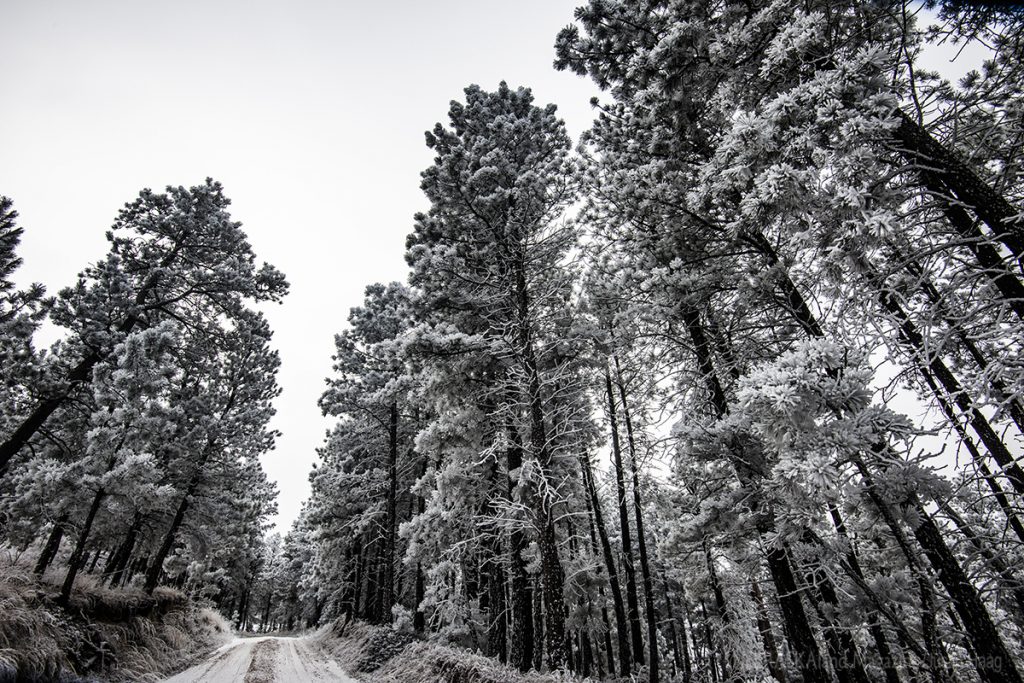
Speaking of prominent pines, these frosty ones towering above East Ash Creek Road were striking.
Iced coffee, anyone? Coffee Mill Butte rises above, and accentuates, the prettiness.
Worn boots provide not only provide western décor for fence posts but also protect them from moisture. As with other points throughout the Pine Ridge, a little frost can certainly amplify their style.
 Nebraskaland Magazine
Nebraskaland Magazine

